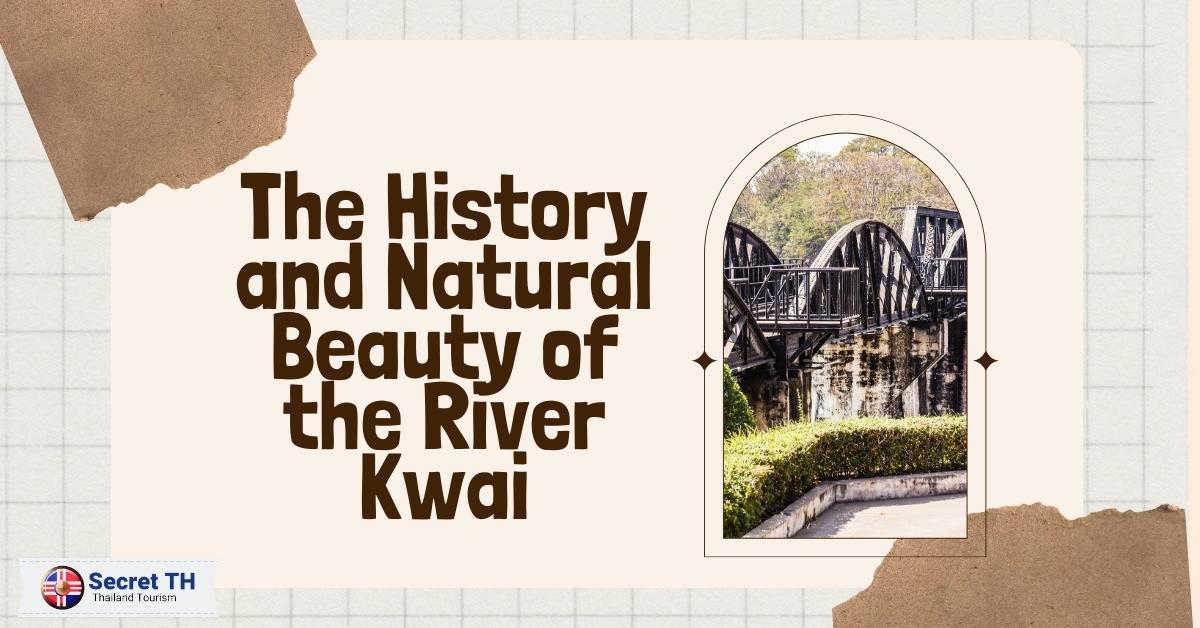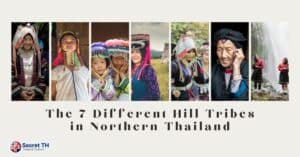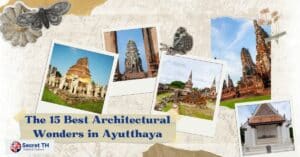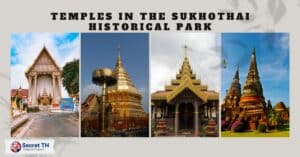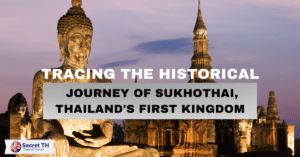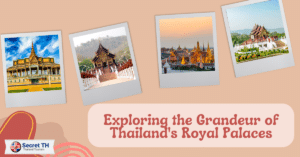Nestled in Thailand’s wild landscape, River Kawai has been witness to some of the most harrowing events of the Second World War, serving as the backdrop for the notorious Death Railway.
The River Kwai, steeped in history, bore witness to World War II’s atrocities, most notably the infamous Death Railway. Post-war, its scarred remnants were transformed by Thailand’s government into a testament to resilience. Today, the lush landscape around the river paints a stark contrast, exuding serene beauty.
Historical Significance
The River Kwai, known worldwide because of its historical context, has a story that’s both somber and enlightening. Beyond its natural beauty, the river’s significance stems from its unique historical events. This section explores the historical events that have shaped the River Kwai’s legacy and its enduring importance in global history.
The River Kwai during World War II
During World War II, the River Kwai gained prominence due to the construction of a railway bridge, often referred to as the “Bridge over the River Kwai.” The Japanese forces, occupying Southeast Asia at the time, undertook this monumental engineering task.
They sought to establish a direct rail link between Thailand and Burma (now Myanmar) to facilitate their military campaign. The bridge’s construction, however, came at a great human cost. Forced labor, including prisoners of war and local civilians, was extensively employed, leading to a significant loss of life.
The extreme working conditions and lack of proper care resulted in what is infamously known today as the “Death Railway.” Despite its tragic past, the bridge stands today as a stark reminder of the grim realities of war and human resilience.
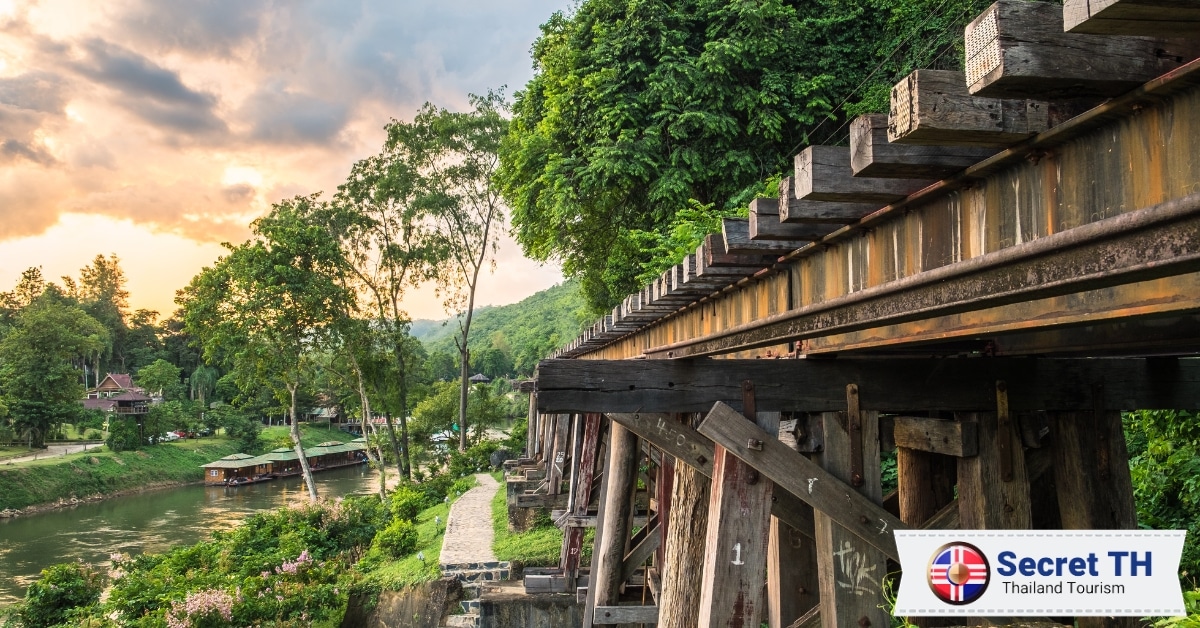
Construction of the Death Railway
The construction of the Death Railway is a poignant chapter in the history of the River Kwai. Notorious for its high mortality rate, the 415-kilometer railway was built largely by manual labor under harsh conditions.
The workforce, primarily composed of Allied prisoners of war and Asian laborers, suffered from extreme maltreatment, malnutrition, and diseases. It’s estimated that around 12,000 POWs and 90,000 civilian laborers lost their lives during the railway’s construction.
Today, the Death Railway is both a solemn memorial of the past and an enduring symbol of human strength in the face of adversity.
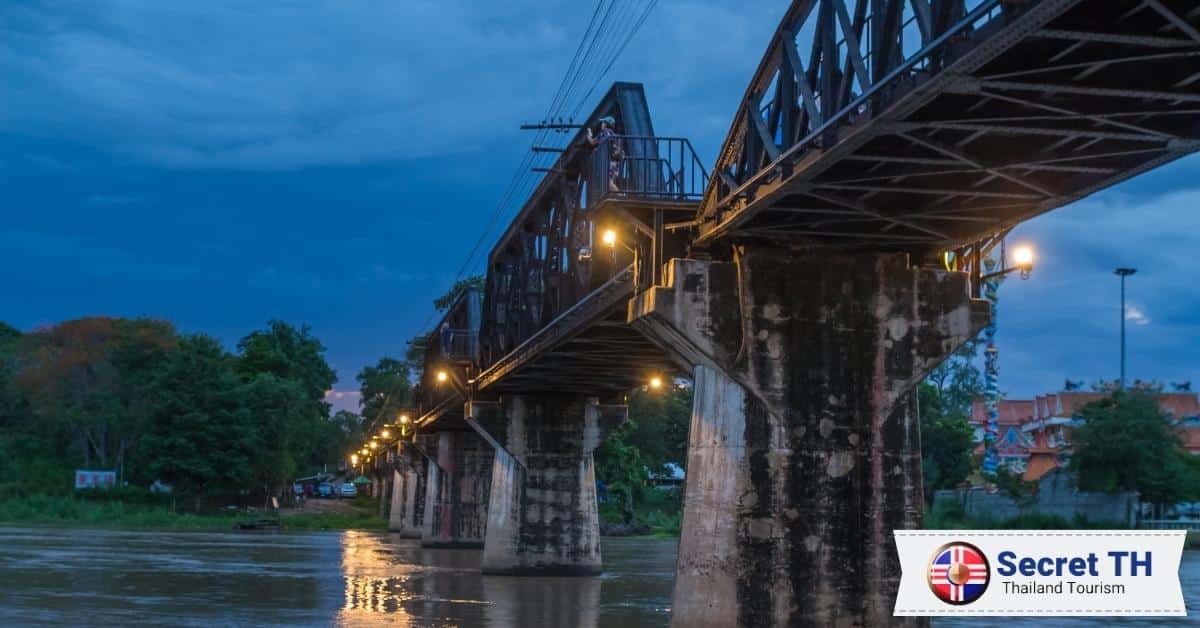
The Bridge Over the River Kwai
The Bridge over the River Kwai, also known as Bridge 277, is an iconic symbol of the River Kwai’s history. Constructed in June 1943, the bridge facilitated the completion of the Death Railway.
Despite being targeted by Allied bombings in 1944, remnants of the original structure remain, serving as a poignant reminder of the immense human sacrifices made during its construction.
Today, the Bridge over the River Kwai is more than a historical landmark; it stands as a testament to human resilience and the will to survive amidst the harshest of conditions.
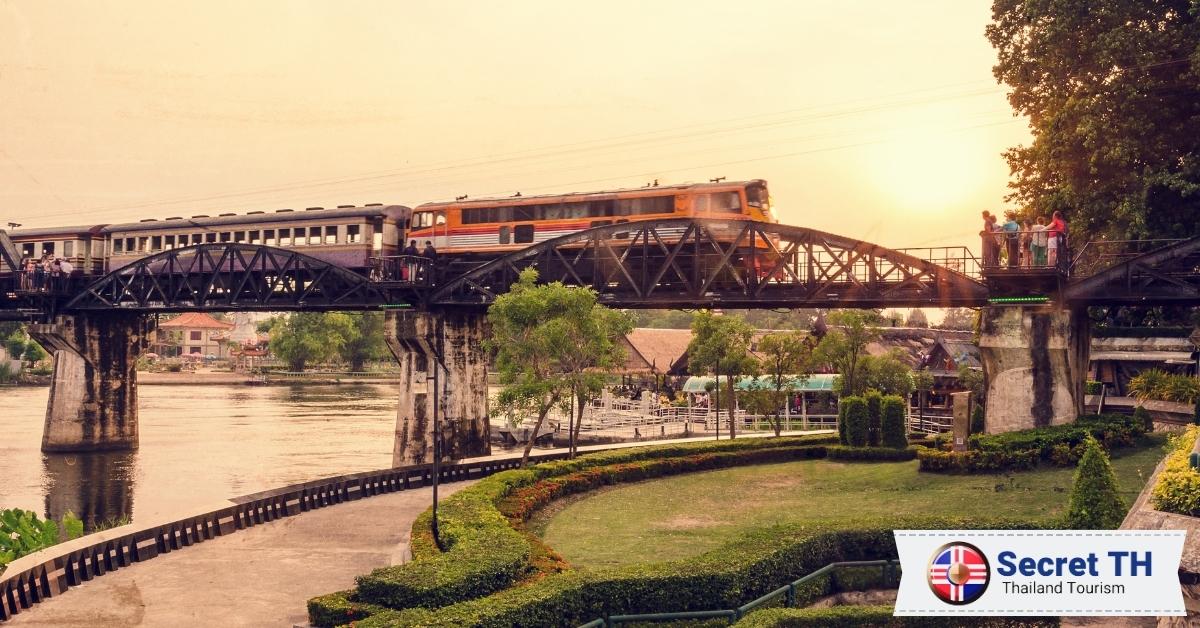
Natural Beauty
Beyond its historical significance, the River Kwai is also renowned for its stunning natural beauty. This section will explore the captivating natural allure of the River Kwai, revealing why it continues to draw visitors from all corners of the globe.
Scenic Landscapes Along the River
The River Kwai meanders through some of the most beautiful landscapes in Thailand, offering breathtaking views and an abundance of natural wonders. Here are some of the key highlights:
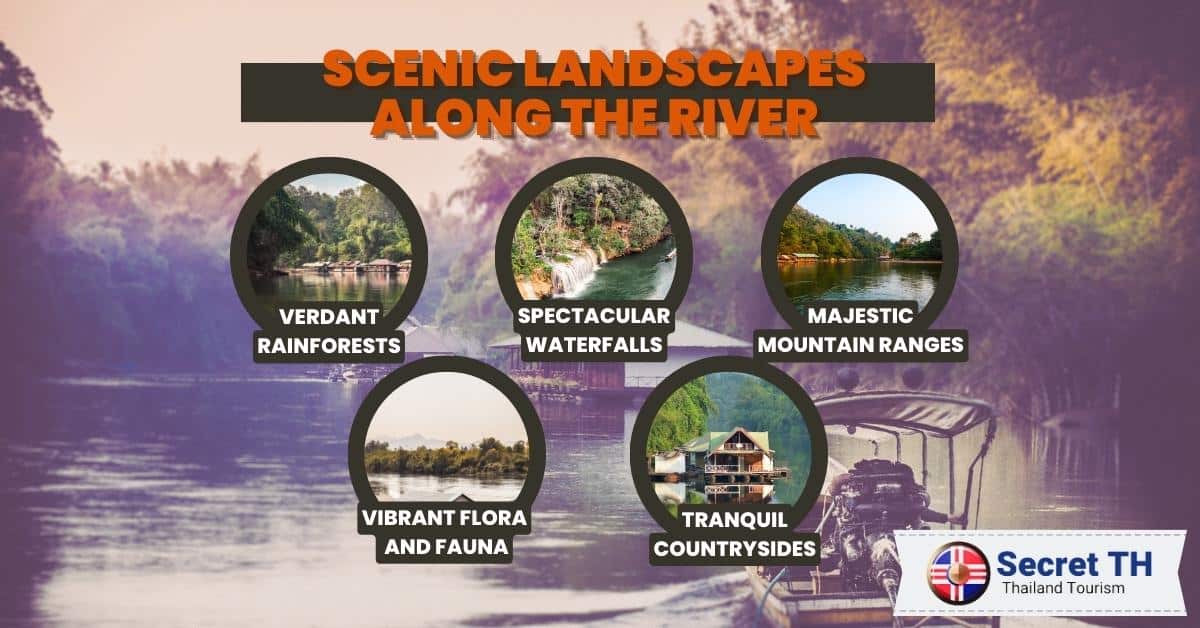
- Verdant Rainforests: The river is flanked by dense, verdant rainforests which provide a lush backdrop to the waterway. These forests are home to an array of wildlife, offering visitors the chance to witness nature in its purest form.
- Spectacular Waterfalls: The region boasts numerous waterfalls, each cascading into inviting pools of fresh water. Among these is the stunning Sai Yok Waterfall, a must-visit for those exploring the River Kwai.
- Majestic Mountain Ranges: The river winds its way through mountain ranges, providing picturesque views at every turn. The mountains’ dramatic peaks and valleys, often shrouded in mist, add to the river’s mystical allure.
- Vibrant Flora and Fauna: The banks of the River Kwai are teeming with a diverse array of flora and fauna. From colorful bird species to unique aquatic life, nature lovers are in for a treat.
- Tranquil Countrysides: The River Kwai also flows through tranquil countrysides and rural hamlets, offering a glimpse into local life and customs. These serene landscapes provide a peaceful contrast to the bustling city life, making River Kwai a perfect getaway.
Flora and Fauna of the River Kwai
The River Kwai is a haven for a wide array of plant and animal species. This biodiversity hotspot is home to numerous bird species, aquatic life forms, and unique vegetation, making it a paradise for nature lovers.
The river’s dense rainforests and verdant banks serve as perfect habitats for these species, enhancing the river’s natural beauty. As you travel along the River Kwai, expect to be enchanted by the symphony of sounds from its vibrant wildlife, and the myriad hues of its diverse flora.
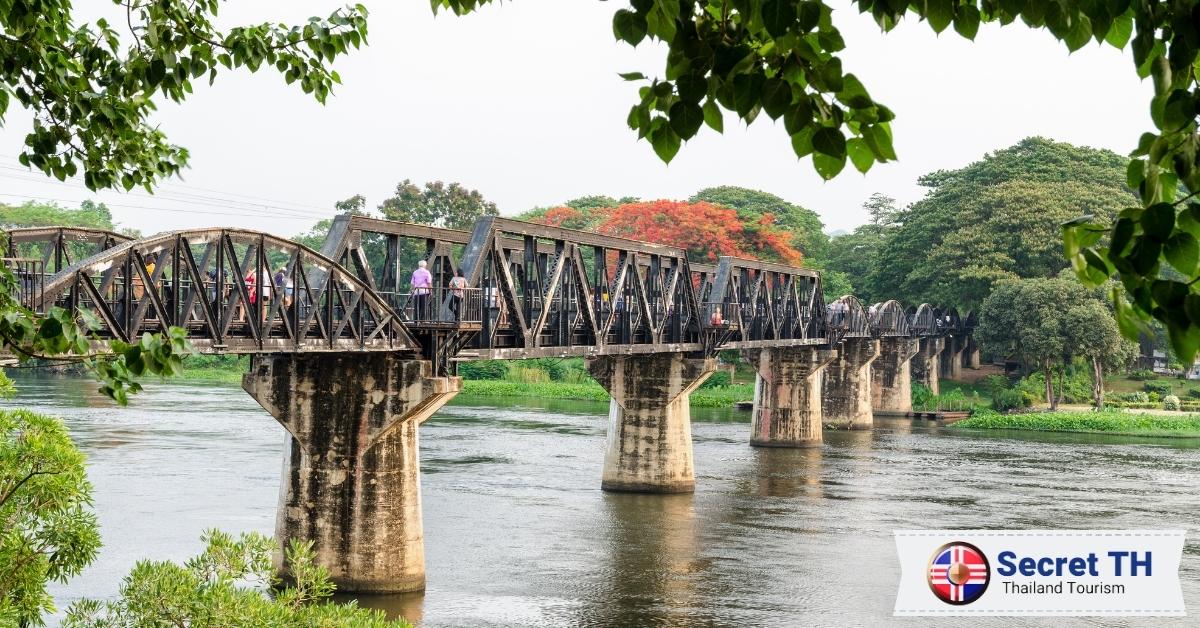
Outdoor Activities and Exploration
The River Kwai is a treasure trove for outdoor enthusiasts, offering a host of activities that allow you to engage with its stunning natural landscapes. You can embark on invigorating hikes through the dense forests, or enjoy a tranquil boat ride along the river.
For the adventurous, white-water rafting provides thrilling encounters with the river’s powerful currents. Cycling tours offer a peaceful way to explore the countryside while bird-watching excursions present an opportunity to spot unique avian species.
No matter your preferred pace, the River Kwai’s outdoor offerings ensure an unforgettable exploration of its natural beauty.
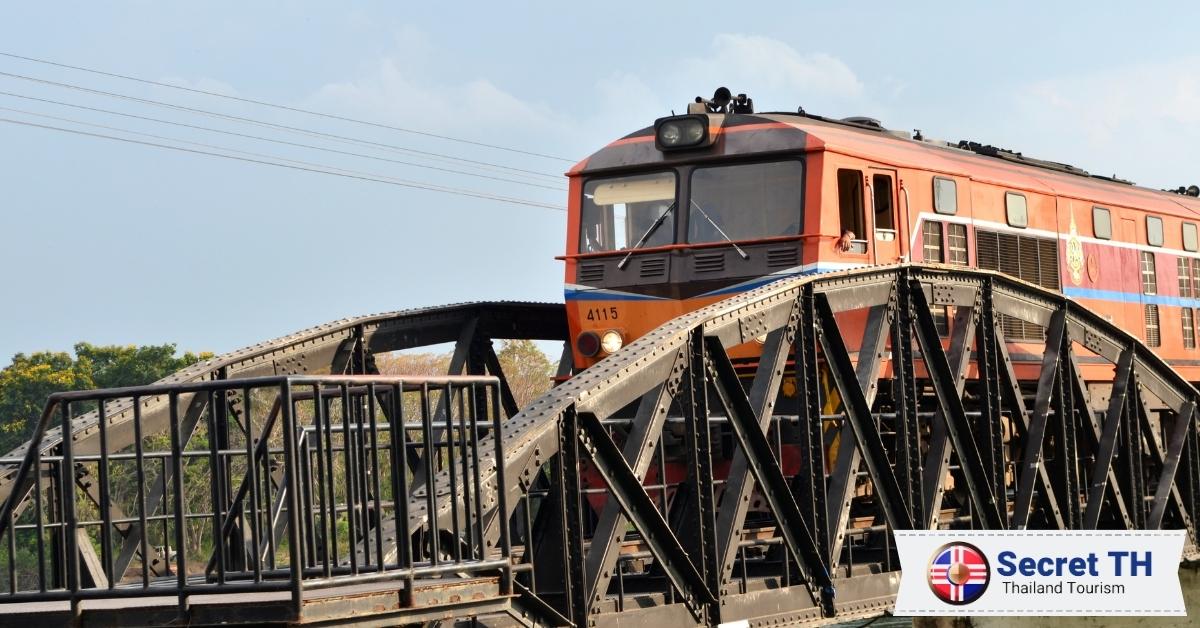
Local Culture and Communities
The River Kwai is not just a testament to historical events and natural beauty, but also a vibrant hub of local culture and communities. This section will delve into the heart of local traditions, customs, and lifestyle, painting a vivid picture of the unique cultural tapestry that colors life along the River Kwai.
Life Along the River Kwai
Life along the River Kwai is shaped by its rich history and stunning natural landscapes. The river forms the lifeblood of the local communities, influencing their daily routines, occupations, and even their cultural practices.
From traditional fishing methods to riverside markets buzzing with activity, the local lifestyle wonderfully reflects the harmonious coexistence of people with nature. Over time, the River Kwai has shaped not only the region’s geography but also the tapestry of human life that thrives around it.
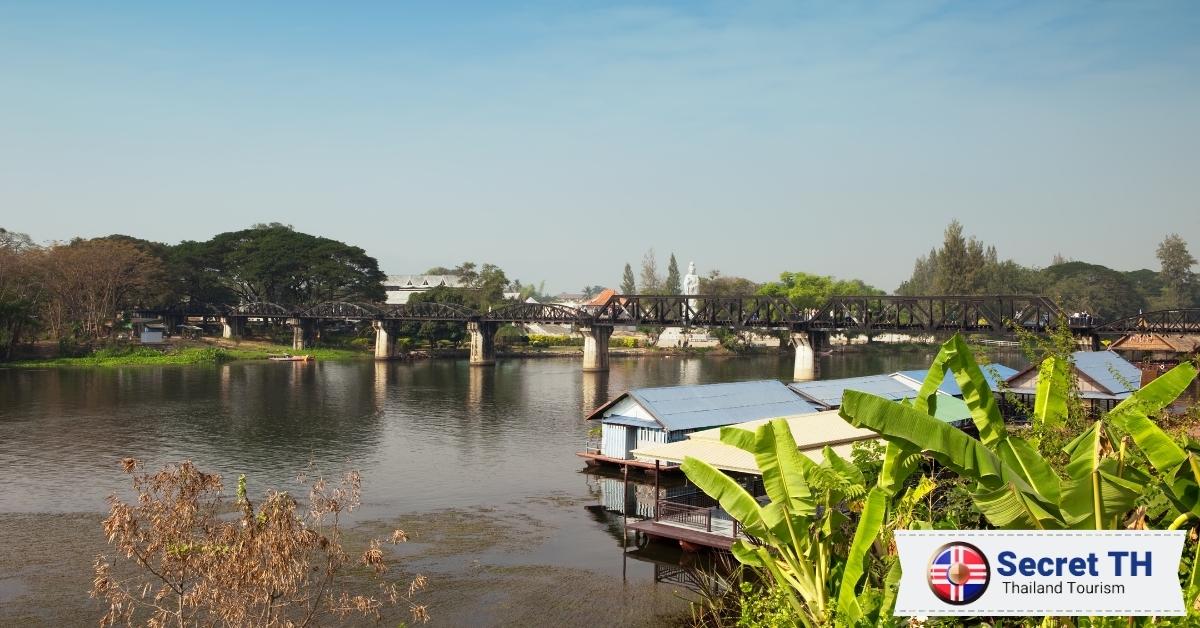
Indigenous Communities and Traditions
The indigenous communities residing along the River Kwai have a rich cultural heritage imbued with unique traditions and customs. These communities have coexisted with the river’s ecosystem for centuries, developing a lifestyle that is inextricably connected to the natural surroundings. Some key aspects of their traditional culture include:

- Fishing Practices: These communities have developed traditional fishing methods that are in harmony with the river’s ecosystem. These practices, passed down through generations, provide a sustainable source of livelihood.
- Handicrafts: Indigenous people along the River Kwai are well-known for their intricate handicrafts, including pottery, weaving, and carving. These crafts are not only a source of income but also a medium to express their cultural identity.
- Festivals: The communities celebrate numerous local festivals tied to the river’s rhythms and the agricultural calendar. These celebrations are vibrant displays of local music, dance, and rituals.
- Cuisine: The River Kwai’s bounty influences the local cuisine, with freshwater fish and local produce playing a significant role. Traditional cooking methods often employ simple, yet flavorful, ingredients to create dishes unique to the region.
- Traditional Houses: The indigenous communities have a unique architecture for their homes, designed to withstand the river’s seasonal changes. These structures, made from locally sourced materials, blend seamlessly into the natural landscape.
Cultural Experiences for Visitors
For visitors seeking an immersive cultural experience, the River Kwai offers a wealth of opportunities to connect with local traditions, customs, and daily life. Every aspect, from participating in traditional festivals and visiting local markets, to sampling regional cuisine and learning about handicrafts, allows visitors to gain a deeper understanding of the region’s rich cultural heritage.
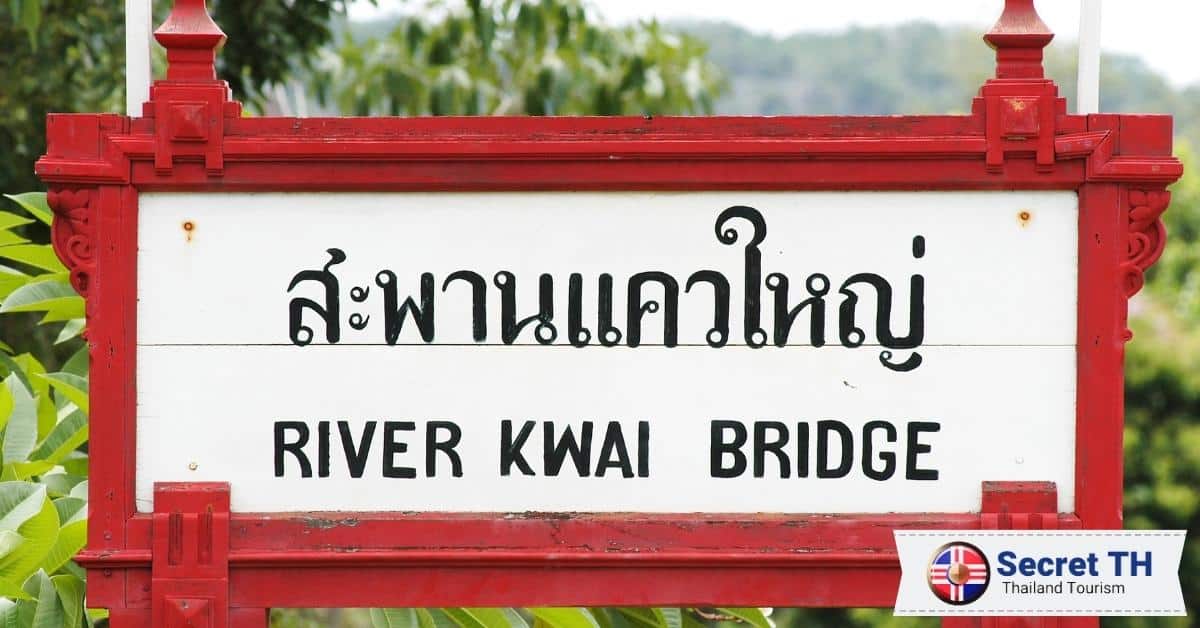
Human Resilience and Remembrance
The River Kwai’s history is a powerful testimony to human resilience in the face of adversity. Beyond the scenic landscapes and vibrant culture, it is the spirit of resilience and remembrance that truly defines the region.
This section explores the enduring legacy of the hardships endured, the lives lost, and the lessons learned from the past, bringing to life the poignant narrative of survival, resistance, and commemoration that permeates the River Kwai’s identity.
Stories of Survival and Heroism
During the construction of the Death Railway and Bridge over the River Kwai, countless tales of survival and heroism emerged. Despite the horrific conditions, prisoners of war and civilian laborers displayed immense courage and resourcefulness, forging bonds of camaraderie and resistance.
Many risked their lives to aid their fellow workers, providing clandestine medical care, sharing scarce resources, and maintaining morale through covert cultural and educational activities. These stories underscore the indomitable human spirit that pervades the River Kwai’s history.
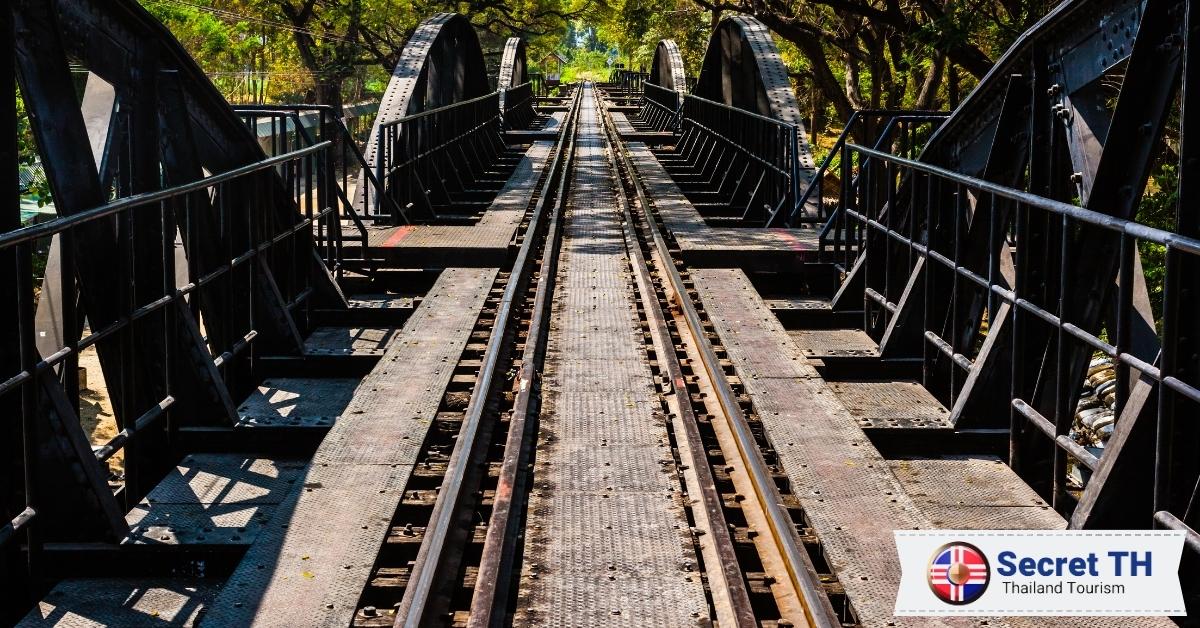
Memorials and Museums
To commemorate the lives lost during the construction of the Death Railway and the Bridge over the River Kwai, various memorials and museums have been established. These sites, such as the Kanchanaburi War Cemetery, Chungkai War Cemetery, and JEATH War Museum, provide a somber reminder of the past. They
offer visitors a deeper understanding of the region’s history, fostering a sense of empathy and respect for the immense sacrifices made during this dark chapter of human history.
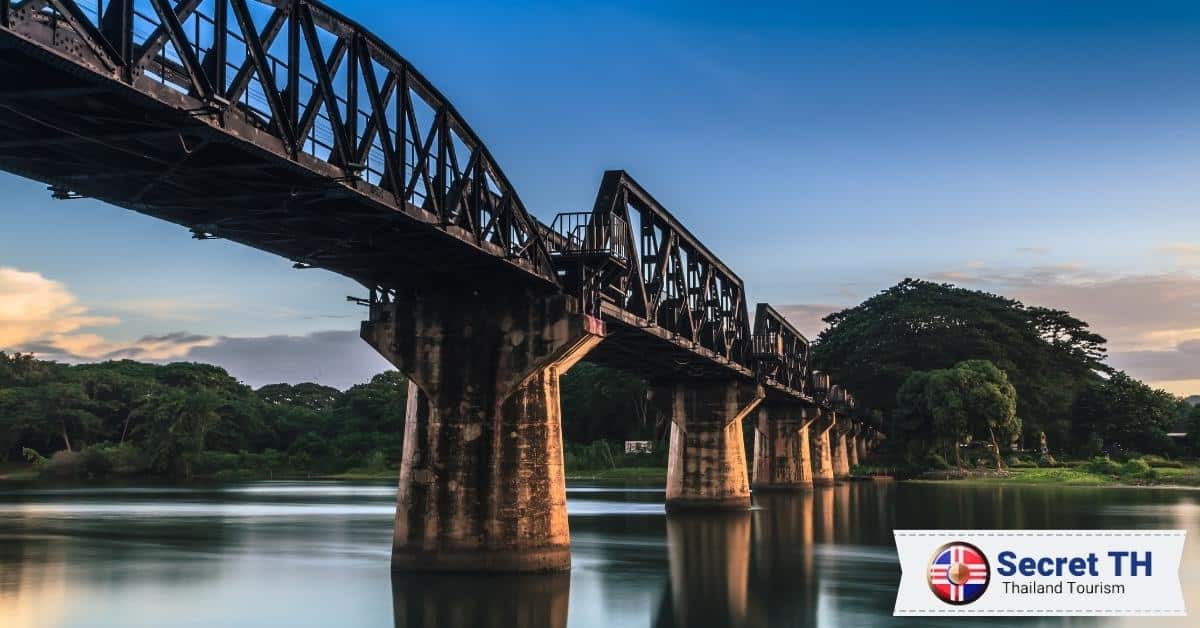
Paying Tribute to the Past
Visiting the River Kwai provides an opportunity to pay tribute to the past. Every year, thousands of people gather for the annual remembrance day, where a moment of silence is observed in memory of those who perished during the construction of the Death Railway.
Visitors can also participate in the ‘Light & Sound’ event, a poignant spectacle that retraces the history of the bridge. By engaging with these commemorative activities, visitors can honor the memory of the victims, fostering a deeper understanding and appreciation of the human resilience and spirit that the River Kwai symbolizes.
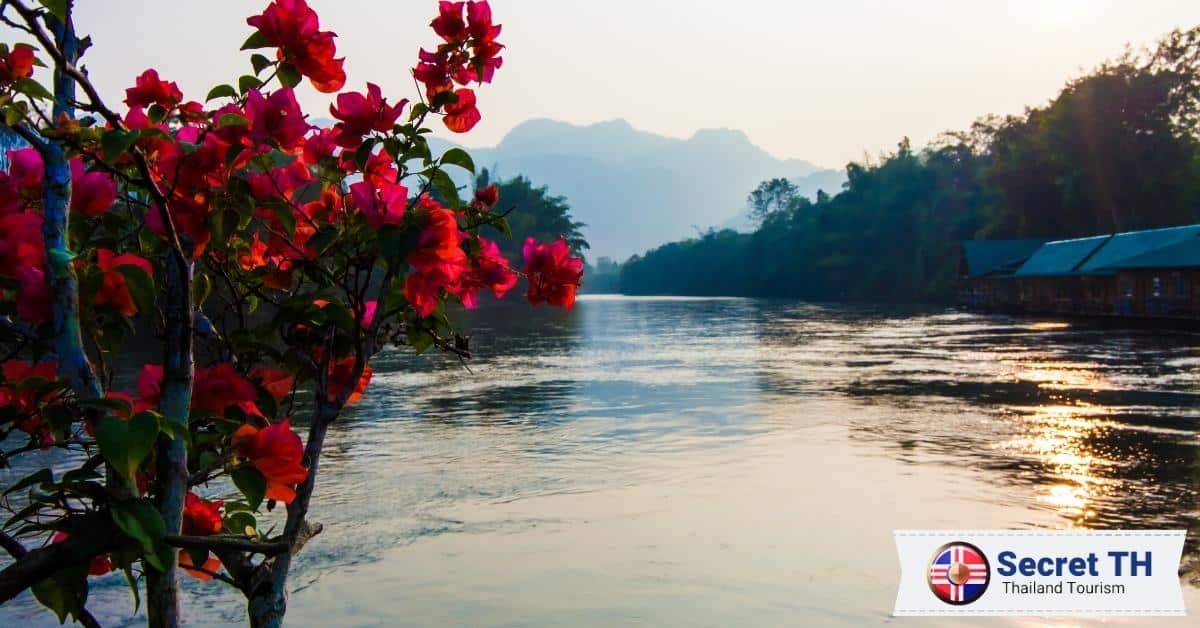
Conclusion
The River Kwai, with its rich history, breathtaking natural beauty, vibrant local culture, and poignant symbols of human resilience, offers a multifaceted exploration experience that leaves an indelible mark on its visitors.
While the construction of the Death Railway and Bridge over the River Kwai remains a dark chapter in human history, the region stands today as a symbol of endurance and the human spirit’s unyielding ability to persevere in the face of adversity.

